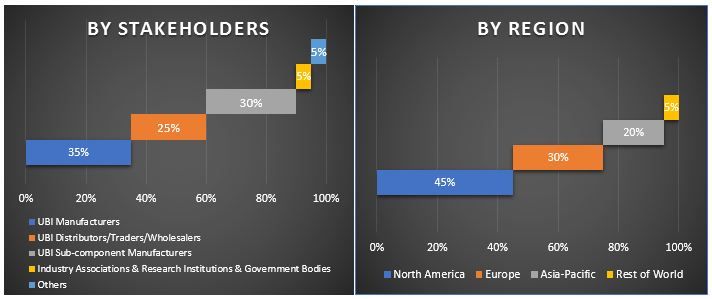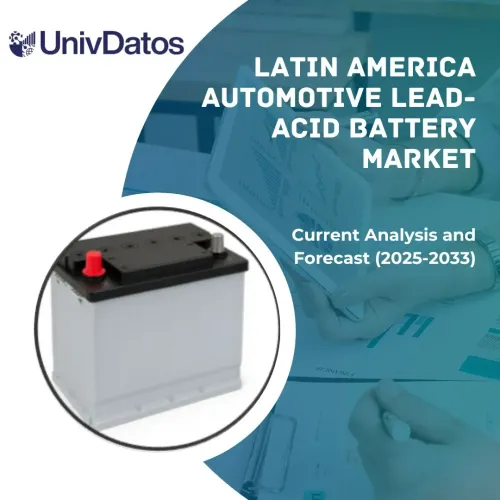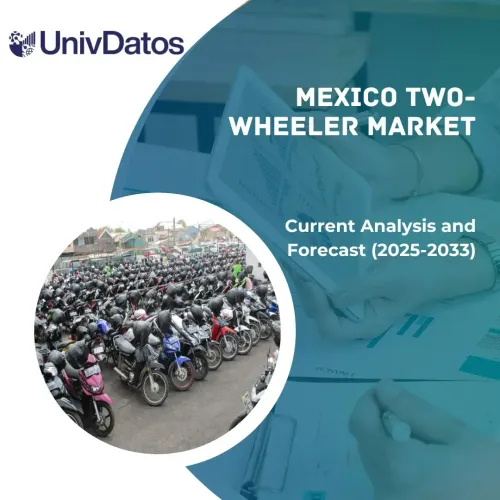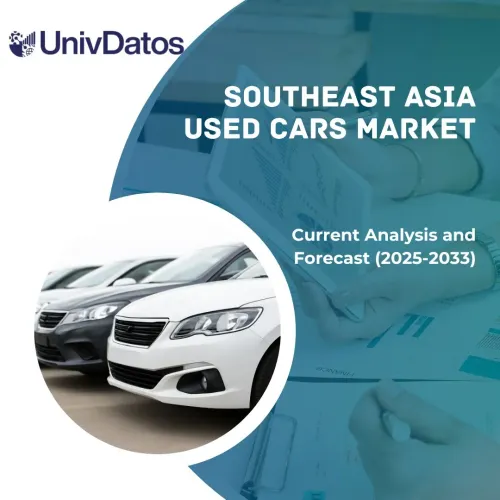- Home
- About Us
- Industry
- Services
- Reading
- Contact Us
Automotive Usage-Based Insurance Market: Current Analysis and Forecast (2020-2026)
Emphasis on Package (Pay-As-You-Drive (PAYD), Pay-How-You-Drive (PHYD), Manage-How-You-Drive (MHYD)), Technology (On-Board Diagnostics (OBD), Smartphone, Black Box, Embedded Telematics), Vehicle Type (Passenger Vehicles, Light Commercial Vehicles) and Region/Country

Global Automotive Usage-Based Insurance (UBI) market was valued US$ 24.5 billion in 2019 and is projected to expand significantly with the CAGR of 24.39% from 2021 to 2026. The flexible insurance premium, lower accident & vehicle theft possibilities, accurate & timely data collection, and lower fuel consumption are the major factors driving the market.
Automotive Usage-Based Insurance provides insurance coverage based on the actual miles a customer drives and other driving variables, such as location, speed, and driver behavior. It relies on telematics devices to collect vehicle-operating data that insurance companies can analyze to price insurance policies more accurately, assess claims, and even recreate accidents for analysis. There have been rising satisfaction and retention in UBI owing to the drivers saving money on their automotive insurance, and rapidly evolving automotive telematics technology. The hardware and software involved in helping insurance companies track driver behavior in a safe, secure, and accurate way.
Today, the internet and smartphones have changed the way people purchase insurance. Technology has made the insurance ecosystem simple, convenient, and easy. Now, the focus is on moving from generalization to personalization and Telematics or Usage-based Car Insurance will make it happen. In the insurance industry, UBI is the most popular use case of big data adaptation. In recent years, the market has been developing rapidly, especially in the American and Europe. By analyzing the real driving behavior, UBI products can achieve the precise risk segmentation and improve the service quality of the insurance company. In addition, UBI products can provide a variety of value-added services. The primary reason for insurers to introduce UBI is to bring in some realistic and correct measurability to ascertain the risk where the customers are exposed to and charge a risk-based premium suggested by an actuary. While virtually all markets currently feature voluntary car-telematics systems, regulators in many countries want to mandate the technology in specific circumstances. For instance, the European Union seeks e-assistance systems in case of accidents. The eCall system, mandatory for all new EU vehicles as of March 2018, should speed up emergency-response times by 40% in cities and 50% in rural areas in the process reducing the number of fatalities by at least 4%.
Fundamental Change Coming to the Auto Insurance Industry
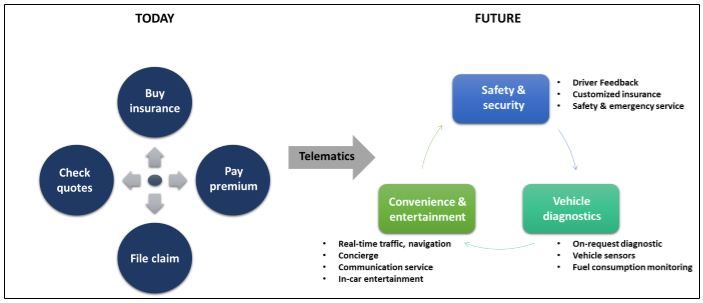
Allstate Insurance Company, Allianz SE, Assicurazioni Generali S.P.A., Sierra Wireless Inc., Octo Telematics, Cambridge Mobile Telematics, TomTom International BV, Vodafone Automotive SpA, Metromile, Inc., AXA are some of the prominent players operating in the global Automotive Usage-Based Insurance market. Several M&A’s along with partnerships have been undertaken by these players to facilitate costumers with hi-tech and innovative products.
Insights Presented in the Report
“Amongst package type, Pay-How-You-Drive (PHYD) segment holds the major share”
Based on package type, the market is fragmented into Pay-As-You-Drive (PAYD), Pay-How-You-Drive (PHYD), and Manage-How-You-Drive (MHYD). Pay-How-You-Drive (PHYD) dominated the market with a share of 69.9% in 2019 and is expected to maintain its dominance during the forecast period owing to the increased consumer preference towards comfort and luxury, and increased competition between OEMs to offer such driver assistance features.
“Amongst technology type, On-Board Diagnostics (OBD) is expected to dominate the market during the analyzed period”
Based on the market segment by technology type, the market is segmented into On-Board Diagnostics (OBD), smartphone, black box, and embedded telematics. In 2019, On-Board Diagnostics (OBD) accounted for 49.9% of market revenue share. Currently, On-Board Diagnostics dominated the Automotive Usage-Based Insurance market and is expected to remain dominant during the analyzed period owing to the value-added services, including maintenance reminders, roadside assistance, and crash notifications. The telematics devices designed to be used with OBD systems are specially targeted at that platform with unbiased data collection across all demographics and vehicle types.
“Amongst vehicle type, passenger vehicles are expected to dominate the market during the analyzed period”
Based on the market segment by vehicle type, the market is fragmented into passenger vehicles and commercial vehicles. In 2019, the passenger vehicles accounted for the maximum market share with 82.7% and is expected to be the leading segment of the Automotive Usage-Based Insurance market during the forecast period. Before “black boxes” or computers in many popular models of passenger cars, the speed and braking of the vehicles were determined by accident reconstruction experts who gathered facts related to the accident to come up with an opinion as to the speed of the cars. For passenger cars equipped with the data recorders, how fast they were going is no longer in dispute.
“North America represents one of the largest markets of Automotive Usage-Based Insurance market”
For a better understanding of the market dynamics of the Automotive Usage-Based Insurance market, a detailed analysis was conducted for different regions across the globe including North America (the U.S, Canada, and Rest of North America), Europe (Germany, France, Italy, United Kingdom and Rest of Europe), Asia-Pacific (China, Japan, India, Australia and Rest of APAC) and Rest of the World has been conducted. North America dominated the market and generated revenue of US$ 10.9 billion in 2019 owing to the increase in the implementation of Mobility-as-a-Service (MaaS) and increasing collaborations among telematics companies and insurance companies in the region.
Reasons to buy this report:
- The study includes market sizing and forecasting analysis validated by authenticated key industry experts
- The report presents a quick review of overall industry performance at one glance
- The report covers in-depth analysis of prominent industry peers with a primary focus on key business financials, product portfolio, expansion strategies, and recent developments
- Detailed examination of drivers, restraints, key trends, and opportunities prevailing in the industry
- The study comprehensively covers the market across different segments
- Deep dive regional level analysis of the industry
Customization Options:
The Automotive Usage-Based Insurance Market can further be customized as per the requirement or any other market segment. Besides this, UMI understands that you may have your own business needs, hence feel free to connect with us to get a report that completely suits your requirements.
Table of Content
Analyzing the historical market, estimation of the current market, and forecasting the future market of the Global Automotive Usage-Based Insurance Market were the three major steps undertaken to create and analyze the adoption of Automotive Usage-Based Insurance across various industry verticals in major regions globally. Exhaustive secondary research was conducted to collect the historical market numbers and estimate the current market size. Secondly, to validate these insights, numerous findings and assumptions were taken into consideration. Moreover, exhaustive primary interviews were also conducted, with industry experts across the value chain of the Automotive Usage-Based Insurance sector. Post assumption and validation of market numbers through primary interviews, we employed a top-down approach to forecast the complete market size. Thereafter, market breakdown and data triangulation methods were adopted to estimate and analyze the market size of segments and sub-segments the industry pertains to. Detailed methodology is explained below:
Analysis of Historical Market Size
Step 1: In-Depth Study of Secondary Sources:
Detail secondary study was conducted to obtain the historical market size of the Automotive Usage-Based Insurance through company internal sources such as annual report & financial statements, performance presentations, press releases, etc., and external sources including journals, news & articles, government publications, competitor publications, sector reports, third-party database, and other credible publications.
Step 2: Market Segmentation:
After obtaining the historical market size of the Automotive Usage-Based Insurance market, we conducted a detailed secondary analysis to gather historical market insights and share for different segments & sub-segments for major regions. Major segments included in the report as package, technology, and vehicle type. Further country-level analyses were conducted to evaluate the overall adoption of the Automotive Usage-Based Insurance in that region.
Step 3: Factor Analysis:
After acquiring the historical market size of different segments and sub-segments, we conducted a detailed factor analysis to estimate the current market size of Automotive Usage-Based Insurance. Further, we conducted factor analysis using dependent and independent variables such as growth of automobile industry, significant adoption of mobility-as-a-service and increasing partnerships among telematics & insurance companies. A thorough analysis was conducted for demand and supply-side scenario considering top partnerships, merger and acquisition, business expansion, and product launches in the Automotive Usage-Based Insurance industry across the globe.
Current Market Size Estimate & Forecast
Current Market Sizing: Based on actionable insights from the above 3 steps, we arrived at the current market size, key players in the Automotive Usage-Based Insurance market, and market shares of the segments. All the required percentage shares split, and market breakdowns were determined using the above-mentioned secondary approach and were verified through primary interviews.
Estimation & Forecasting: For market estimation and forecast, weights were assigned to different factors including drivers & trends, restraints, and opportunities available for the stakeholders. After analyzing these factors, relevant forecasting techniques i.e. top-down approach was applied to arrive at the market forecast about 2026 for different segments and subsegments across the major markets globally. The research methodology adopted to estimate the market size encompasses:
- The industry’s market size, in terms of value (US$) and the adoption rate of Automotive Usage-Based Insurance across the major markets domestically
- All percentage shares, splits, and breakdowns of market segments and sub-segments
- Key players in the Automotive Usage-Based Insurance market in terms of services offered. Also, the growth strategies adopted by these players to compete in the fast-growing market
Market Size and Share Validation
Primary Research: In-depth interviews were conducted with the Key Opinion Leaders (KOLs) including Top Level Executives (CXO/VPs, Sales Head, Marketing Head, Operational Head, and Regional Head, Country Head, etc.) across major regions. Primary research findings were then summarized, and statistical analysis was performed to prove the stated hypothesis. Inputs from primary research were consolidated with secondary findings, hence turning information into actionable insights.
Split of Primary Participants in Different Regions
Market Engineering
Data triangulation technique was employed to complete the overall market estimation and to arrive at precise statistical numbers of each segment and sub-segment of the Automotive Usage-Based Insurance market. Data was split into several segments & sub-segments post studying various parameters and trends in the areas of package, technology, and vehicle type of the Automotive Usage-Based Insurance market.
The main objective of the Automotive Usage-Based Insurance Market Study
The current & future market trends of Automotive Usage-Based Insurance were pinpointed in the study. Investors can gain strategic insights to base their discretion for investments from the qualitative and quantitative analysis performed in the study. Current and future market trends were determined the overall attractiveness of the market at a regional level, providing a platform for the industrial participant to exploit the untapped market to benefit as a first-mover advantage. Other quantitative goals of the studies include:
- Analyze the current and forecast market size of Automotive Usage-Based Insurance in terms of value (US$). Also, analyze the current and forecast market size of different segments and sub-segments
- Segments in the study include areas of package, technology, and vehicle type
- Define and analysis of the regulatory framework for the Automotive Usage-Based Insurance industry
- Analyze the value chain involved with the presence of various intermediaries, along with analyzing customer and competitor behaviors of the industry
- Analyze the current and forecast market size of the Automotive Usage-Based Insurance market for the major region
- Major regions studied in the report include North America (the U.S and Canada), Europe (Germany, France, Italy, and United Kingdom), Asia-Pacific (China, Japan, India, and Australia), and the Rest of the World
- Company profiles of the Automotive Usage-Based Insurance market and the growth strategies adopted by the market players to sustain in the fast-growing market Deep dive regional level analysis of the industry
Related Reports
Customers who bought this item also bought

